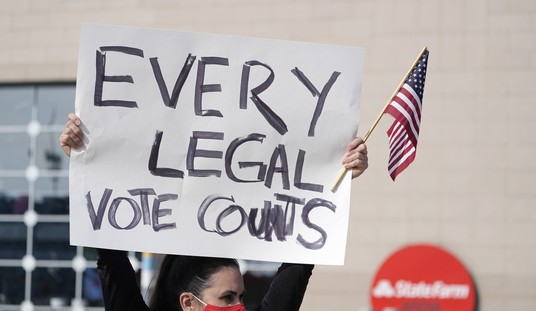The good news: Last year, California's homicide rate dropped to its lowest level since 1966. Violent crimes were down from the year before.
The bad news: Federal judges and California lawmakers juggling to run a state government despite a huge budget deficit are making decisions that threaten to dismantle a system that has made California a safer place to live. If they get their way, today's state prison population of 162,000 inmates could drop by more than 40,000 within two years.
Are you afraid yet?
Last week, the U.S. Supreme Court upheld a 2009 three-judge panel ruling that ordered California to reduce its prison population by some 33,000 inmates in two years to alleviate overcrowding. The problem: No one elected the federal judges, yet they seem to think they are lawmakers. The three judges ignored improvements in prison medical and mental health care -- the basis for the Plata and Coleman lawsuits that spawned the decision -- and then decided that the remedy for poor services in the past is to reduce the prison population in the future.
The state already had begun reducing the number of inmates -- by 11,000 inmates over five years -- with changes to the parole system. In addition, Gov. Jerry Brown has been pushing for a plan to transfer some offenders to county jails -- which should cut the state prison population by 35,000.
It may look like a wash, but it isn't.
Corrections chief Matt Cate noted there are many "unknowns." What if a lawsuit stops the construction of the Stockton medical facility? The Plata decision "reduces our flexibility."
The biggest "unknown," you should know, is that the Legislature hasn't passed a bill to fund Brown's plan to shift some costs and services to local government. As the spokeswoman for Assembly GOP Leader Connie Conway explained, Republicans think the measure "puts public safety at risk." Conway looks at Fresno, where car thieves are let out of jail within days of their arrest, and she sees a recipe for more crime.
Recommended
Before this Supreme Court ruling, Republican lawmakers feared that the Brown plan would put low-level -- and some not-so-low-level -- offenders out on the street.
With the Plata decision, however, the Brown plan has a new wrinkle. The three judges' order involves 33 state prisons. The Brown plan would transfer jurisdiction for some 9,000 low-level offenders heretofore housed in conservation camps and out-of-state contracted facilities. Add the two together and you get: 42,000 inmates, 33,000 of whom violated their way into the big house.
Before the ruling, the state corrections department had begun canceling contracts for the 9,800 inmates housed out of state and had budgeted for only half those slots. Cate told me Thursday that the administration is reconsidering that decision -- and can quickly change course. May I suggest? Do so, pronto.
"I don't think you should assume that the administration will decide to let out anybody," Cate admonished.
But there are two forces that shout otherwise.
One: The state is broke. Teachers, welfare workers and government-aid recipients look at the $9 billion corrections budget and think they could spend the money better. The state spends close to $50,000 per inmate because prison staff is well paid and federal judges have ordered health care improvements that boosted the tab for health care to $14,000 per inmate per year. Counties and cities have had to lay off law enforcement officers, and Brown promises pay local government about half as much as the "$50,000 scholarships" to take inmates off the state's hands.
Two: There's the big liberal lie that California's 1994 three-strikes law has bloated state prisons with pizza thieves and pot smokers. In fact, the state's incarceration rate -- 456 inmates per 100,000 residents -- is slightly above the national average of 432 per 100,000. In 2009, 55 percent of state inmates had been convicted of violent or sexual crimes, 20 percent were in for property crimes like burglary and car theft. The rest were convicted for drug dealing, weapons charges, drunken driving and other charges. About 10,000 males were serving time for drug possession. You can figure most had serious priors and were housed in the cheap seats.
Even law-and-order types understand that the system must be streamlined. Nina Salarno Ashford of Crime Victims United told me, "I understand budget constraints." For example, parole violators should go to jail -- not prison. But Salarno looks at overcrowded jails, which already have had to release inmates, and fears the consequences.
How do you pay for it?
"It is probably going to take taxes," she answered.
No lie. There is not much point in keeping taxes low -- only to have some lowlife boost your wallet.
On the other hand, there's not much point in paying higher taxes if the state slashes the number of inmates by 40,000 or more.
California has been down this road before. In the 1970s, indeterminate sentences led to soft sentences for violent offenders. The public demanded tougher laws and the crime rate dropped. Now that these laws have paid off, Brown and the Democratic Legislature want to cut off their legs.
The U.S. Supreme Court, in its wisdom, actually argued that three federal judges were right to conclude that releasing thousands of inmates won't significantly increase crime and "could even improve public safety."
Justice Anthony Kennedy just restarted the cycle: soft law, doomed to be followed by brutal crime, which will be followed by harsh remedies. He has no idea what he has done.

























Join the conversation as a VIP Member